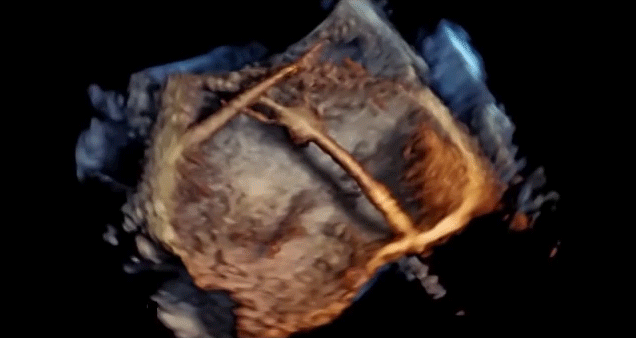X-rays, the technology that allows us to peer inside the human body in real-time, can only be used for limited durations for safety reasons. So GE has developed new software that instead relies on ultrasound, which is safe for even foetuses, to generate real-time 3D views of our internal organs.
Ultrasound technology is not unlike the SONAR that submarines use to see under water. An emitter blasts high-frequency inaudible sound waves into the body, and a computer listens for the echoes and generates images of obstacles in the way — which turn out to be our internal organs. But traditional cardiac ultrasound machines used a technique called beamforming that only images the heart in slices, requiring doctors to visualise a complete model in their minds, which can make it difficult to spot areas of concern.
To improve a cardiac ultrasound machine’s capabilities, engineers at GE developed a new piece of software called cSound that allows the hardware to work in a completely different way. It intelligently processes all of the data being returned by an ultrasound signal, and uses that information to generate real-time views of organs in 3D. The software can analyse a DVD’s worth of data — just shy of five gigabytes — every second, allowing it to decide what data needs to be kept, and which discarded, to produce stunning real-time images of what’s going on inside us.

The new approach to cardiac imaging sounds very similar to the 4D ultrasound machines that many hospitals now advertise as a way to see a baby before it’s born. And it is, but with some key differences in the image processing algorithms. Parents want to see the smooth surface of their unborn child’s skin, because it’s easier for them to understand what they’re looking at having not been trained in interpreting medical images. But doctors are more concerned with being able to see minute differences in heart tissue, so the cSound software does that by instead shading the 3D models so those differing areas stand out by colour.
According to doctors, the new 4D cardiovascular ultrasound machines produces images so detailed that they can actually see how blood flow is affected by clots inside arteries, or how much blood is leaking around a valve that’s malfunctioning. And because there’s no radiation involved, there’s no limit to how long the machine can be used on a patient, or how frequently their internal organs can be imaged in 4D.
[GE]
